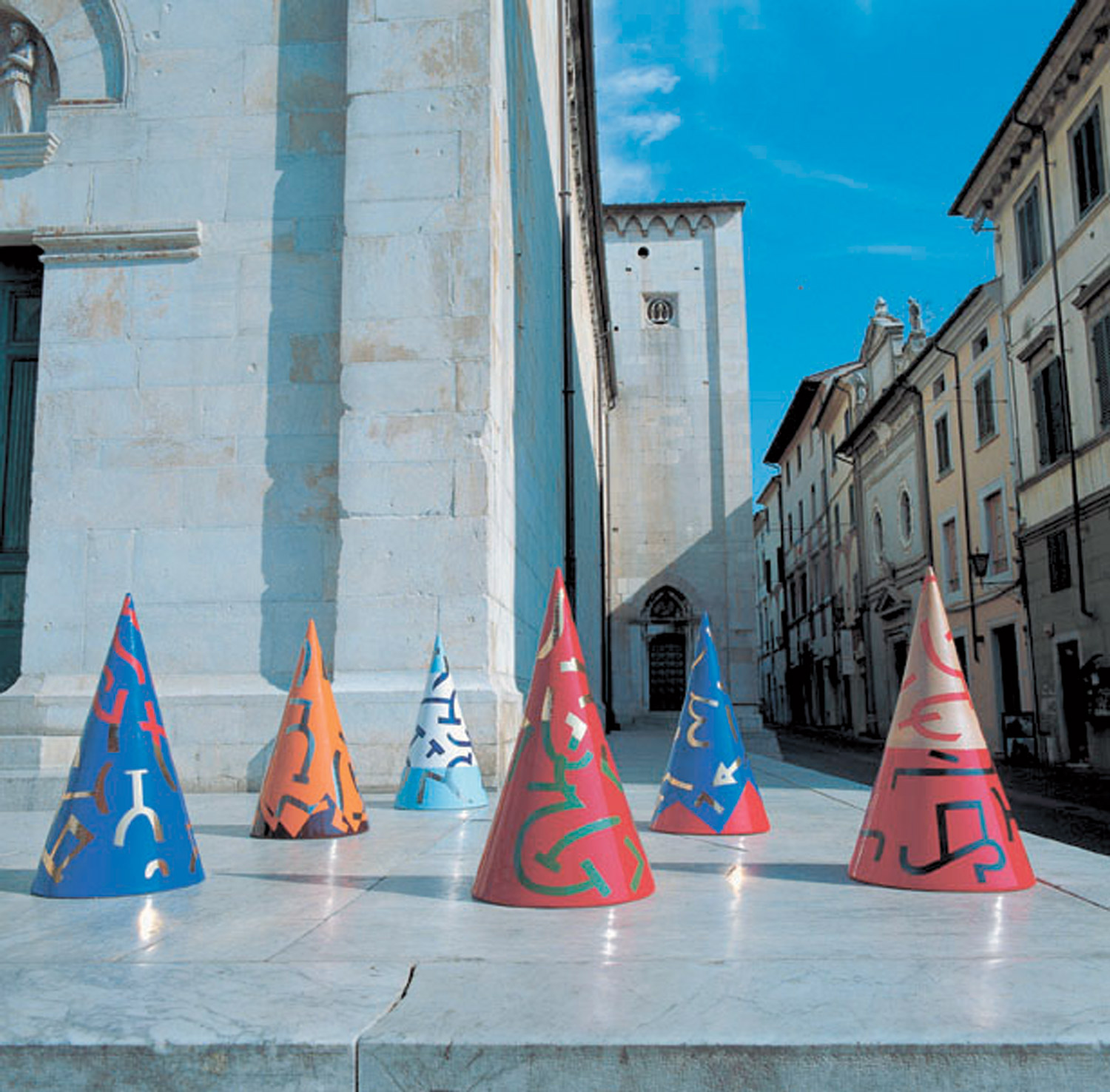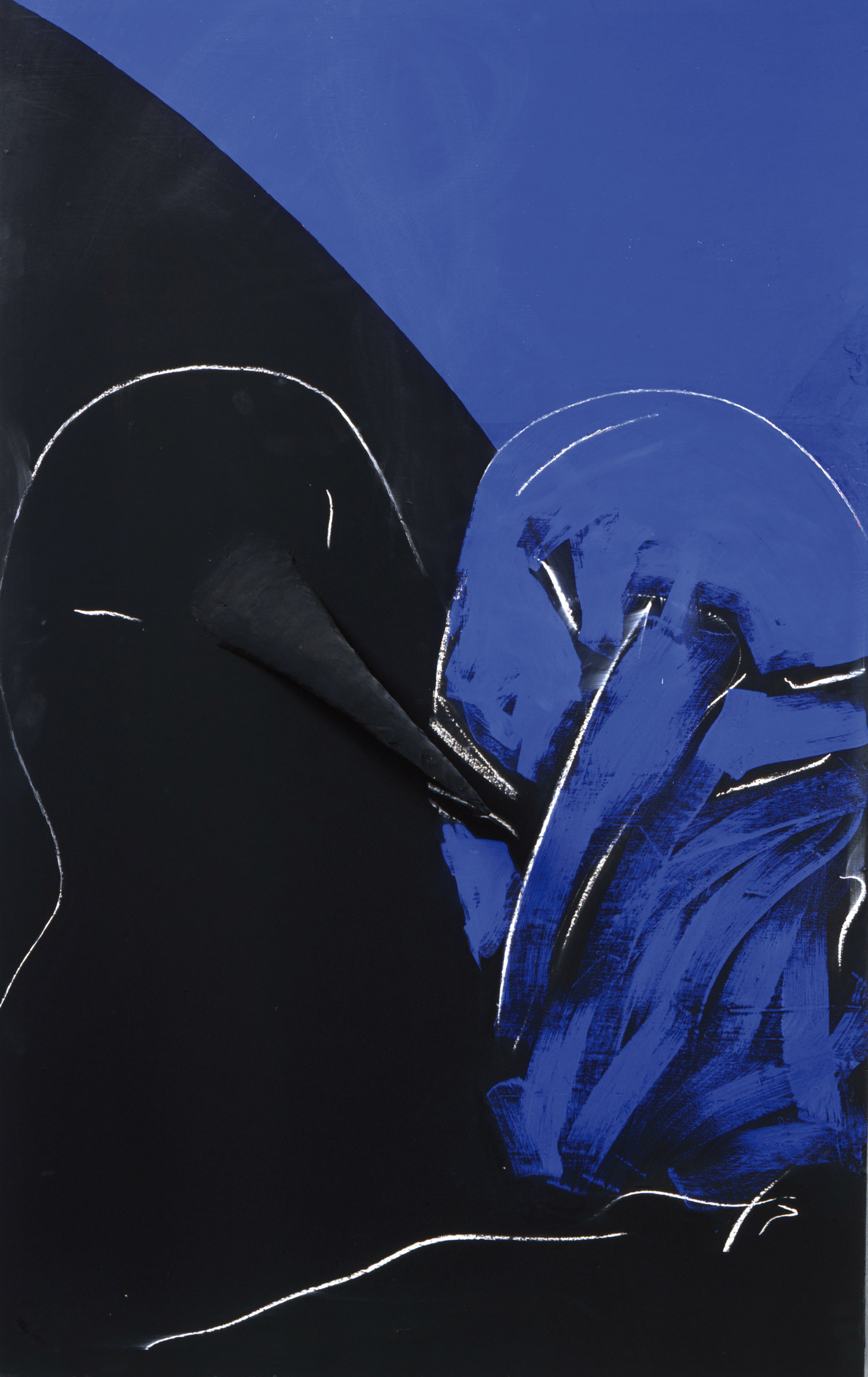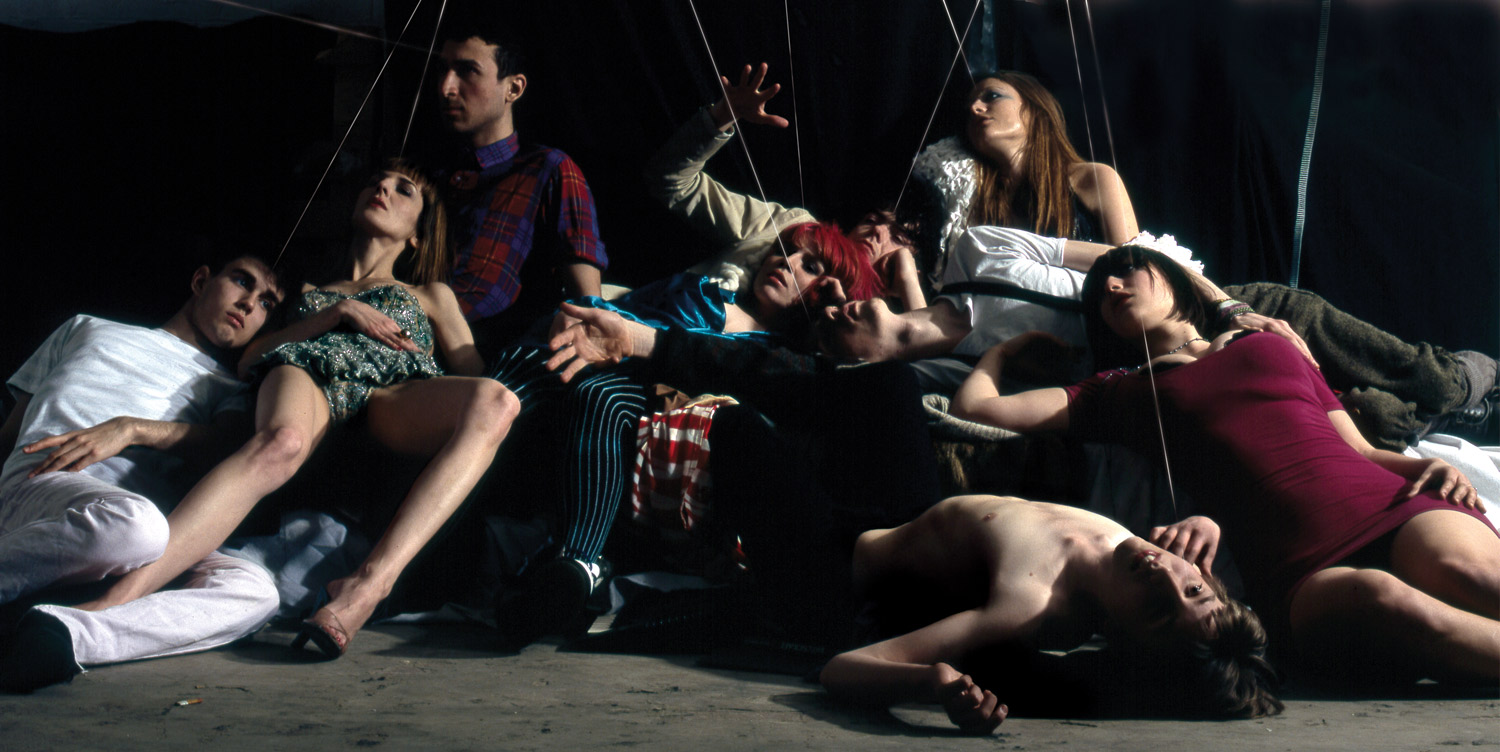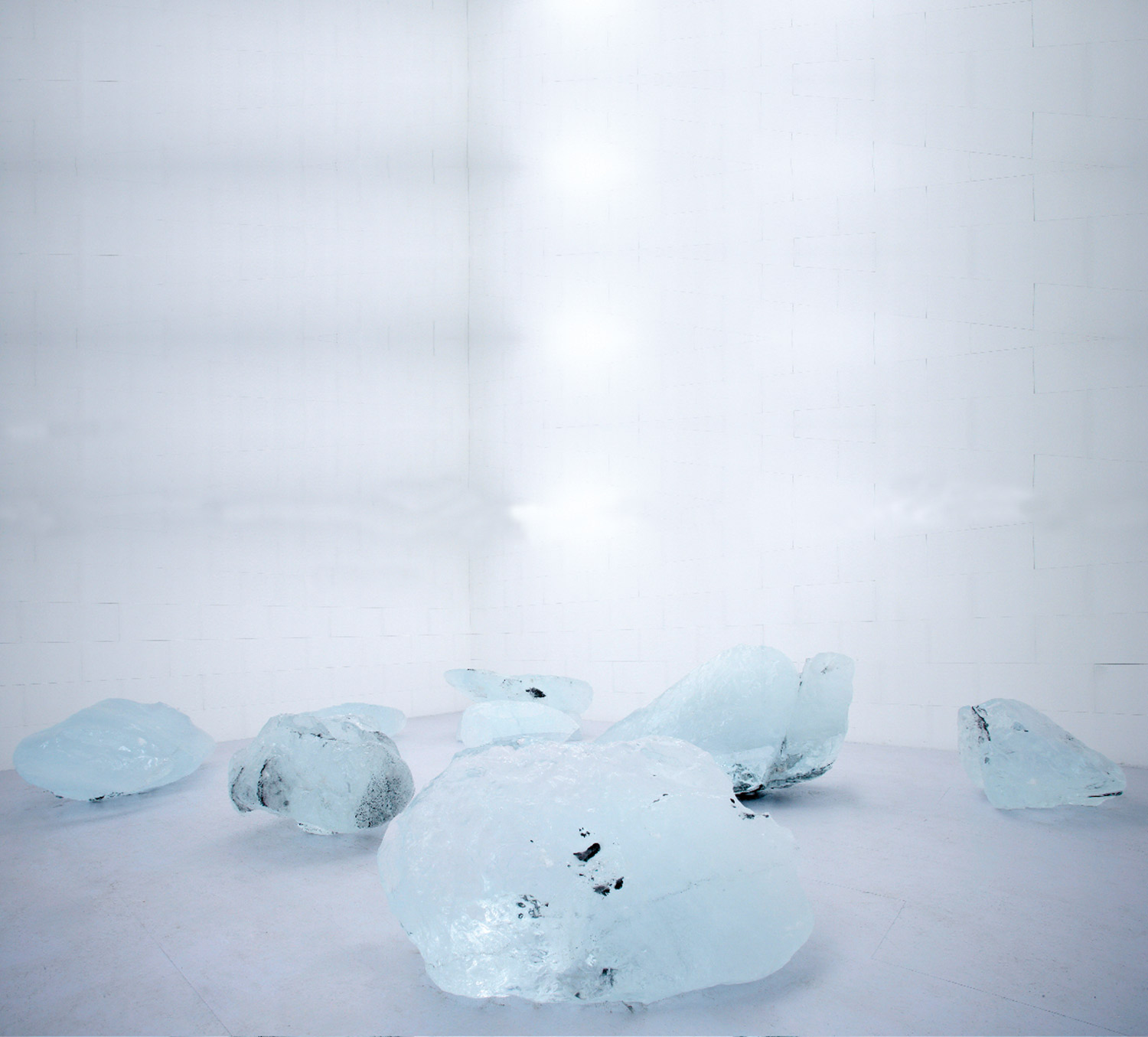
After Arte Povera work in the early ’60s and mid ’70s by Anselmo, Boetti, Fabro, Kounellis, Mario and Marisa Merz, Pascali, Penone, Pistoletto, Prini, Zorio and Celant. After Transavantgarde work in the late ’70s and mid ’80s by Chia, Clemente, Cucchi, De Maria, Paladino and Bonito Oliva. After the end of Modernity in Italy during Pasolini, ’68, and the Red Brigades… and after the beginning of postmodernism in Italy, after ’77, color TV, Andrea Pazienza, Nanni Moretti, Craxi and “made in Italy.” After these key moments in Italian art, in which we should recognize the influential work of artists who tied Modernism and postmodernism together, such as De Dominicis, Ontani, Salvo, Agnetti and Chiari. After all of this, Italian art is slowing down because of many factors. Among them, a backward art system that cannot compete in a globalized world, and the interruption of the long-standing artistic dialogue between generations, interrupted by the Transavantgarde movement. What I mean is that until the Transavantgarde movement, artists from different generations would hang out together, the elders helping out the younger artists, picking out the new talents while passing on their knowledge. With the Transavantgarde movement, this cycle was interrupted for many years. In Italy, the older artists chose to communicate and exhibit only with artists equal to themselves in fame and reputation. Even though this interruption cannot serve as an excuse, nonetheless it has caused a disruption for which we are still suffering the consequences. Finally, and partially thanks to the international support of Vanessa Beecroft and Maurizio Cattelan, at the end of the ’90s Transavantgarde artists like Cucchi, Spalletti and Garutti have begun to reconnect with new generations.
After industrial Turin, banquets in Rome and drinks in Milan, a lo t has happened. Progressively, artistic debate has moved from Rome and Turin to Milan. In Rome, the “New Roman School” of Bianchi, Ceccobelli, Dessì, Gallo and Tirelli has attempted to take over the Transavantgarde, rising from the neighborhood of San Lorenzo. In Milan, the New Futurists sought growth under the names of Lodola, Plumcake, Abate, Palmieri and Bonfiglio. Yet, for a while there has been a growing necessity to move onwards. Times are changing and after about thirty years since Azimuth and Manzoni, since the Arte Programmata movement of Munari, Colombo, Alviani and the Gruppo N, Milan is coming to the forefront once again.
Corrado Levi has already moved from Turin to Milan to teach in the Architecture Department. As a professor, an artist, a gallerist, a poet, a collector, an art critic, a curator and a mentor, Levi has nourished artistic debate since the mid-’80s and the early ’90s. One can trace his influence from Arienti to the Lazzaro Palazzi group, which are also the temporal limits of the focus of this essay. Flash Art has already moved from Rome to Milan. Since the end of the ’70s, Flash Art has become a magazine of international reference, no longer an elite publication but a widely read bimonthly. More and more galleries in Milan open up, move or shut down, such as De Carlo, Guenzani, Giò Marconi, Studio Casoli, Emi Fontana and Paolo Vitolo. These places are starting to exhibit new important art. Similarly, non-profit spaces, like Viafarini and Care/of, exhibit new works. In Milan, Luciano Fabro is a professor in painting at the Accademia delle Belle Arti in Brera. Also in Milan, the Casa degli Artisti works with Luciano Fabro, Nagasawa, the art historian Jole de Sanna, and many young students of Fabro.

Milan! Milan! Milan!
Yet we cannot speak of a Miracle in Milan, to reference the title of a movie by Zavattini and De Sica. I mentioned the Architecture Department in which Corrado Levi teaches Architectural Composition. Despite the title, Levi keeps the visual arts high in his consideration. In his classes he has taught mainly by inviting people like Boetti, Merz, Long, Ontani, Accardi… and not only artists. Also Ringo, the hairdresser, Alexander the magician, DJ Nicola Guiducci, among others. These people are invited to talk about their methodology. I mention this because the Architecture Department in Milan has indirectly affected art in a way that has yet to be recognized. For the most part, people highlight the Accademia di Belle Arti, which has focused on conservation rather than innovation from the end of the ’70s to the beginning of the ’90s. Gabriele Basilico (Milan, 1944), and Alberto Garutti (Galbiate, Italy, 1948), graduated from the Architecture Department of Milan as artists rather than as architects. Their work, already around in the mid ’70s, had been recognized as some of the most significant of their generation in the mid ’90s.
The connection between architecture and art is part of a tradition that has existed in Milan since the times of Giò Ponti and Fontana. Through this connection, art and life could come together. Furthermore, the Politecnico in Milan was an advanced center for cultural elaboration. In 1985, there was a show in Milan held at the Brown Boveri, an old and broken down factory. There, in great freedom, about fifty young artists showed their work. Many of them came from the Architecture Department and, in particular, the class taught by Levi. The show was organized like a rave party. Invitations were passed on by word of mouth from artist to artist. For this exhibition, Levi created an existentialist-cultural work by simply adding “by Corrado Levi” to the “Men” sign above the men’s bathroom. The result was “Men of Corrado Levi.” In addition, at the show Levi chose a number of young artists whom he decided to support. For the most part, these were young people who had never created a work of art before, such as Stefano Arienti, who used chalk to color the mold on walls. Although no one has ever recognized this, at this event Levi inaugurated a neorealist phase in Italian art. Similar to Italian film directors, who used non-professional actors and people from the streets, Levi invited everyone to be an artist: those who had come across art by chance, as well as those that did not come from a program of studies or from the world of art. Levi’s actions greatly contrasted the Italian tradition of that time. In other words, Levi introduced a new way of understanding the relationship between art and life. Before Levi there had been artists from different disciplines, but they were singular cases. With Levi, non-professional artists became part of a method, although he always argued against the notion of a method and his role as a teacher.
Within the triangulation of life, art and architecture, other artists appeared and disappeared during that time. People like Amedeo Martegani, Marco Mazzucconi and Mario Dellavedova were among those who either remained underground or developed into full bloom. There were also some loners, like Massimo Kaufmann and Marco Cingolani. In Milan, Levi opened a space in Via San Gottardo, where he exhibited the work of many young artists both in solo and group shows. Eventually, these exhibitions broadened and moved to the Volpaia in Tuscany and PAC in Milan. The “New Polverone” and “The Cangiante” are two of the important shows that testified to the fragmentary and variable nature of art at the time. In a column he wrote for a couple of years in Flash Art, Levi also called for the importance of developing art that was open to non-artistic experiences.
As we mentioned earlier, however, at the end of the ’70s Luciano Fabro entered the Accademia di Brera in Milan. In contrast with Levi, in his classes Fabro advocated the centrality of art. The main idea was that “art returns to art.” This concept was highlighted in school as well as at the Casa degli Artisti, together with Nagasawa, Jole de Sanna, and the ever changing group of artists, mostly students, that came and went. The two perspectives highlighted above, respectively Levi’s and Fabro’s, served as the base for the development of an Italian artistic debate, particularly in Milan. Here, more and more artists came from Rome to show their work. For instance, Alfredo Pirri, whose work referenced Lucio Fontana; the Vitone brothers from Genova; Roberto O. Costantino; Cesare Viel; Simonetta Fadda; Formento and Sossella. All these artists looked at Fluxus, and particularly to the work by Giuseppe Chiari, as well as to Pusole and Zanichelli, free-style painters from Turin. There were the so-called “Piombinesi”: Stefano Fontana, Pino Modica, Salvatore Falci and Cesare Pietroiusti, whose work dealt with psycho-relational art.

Over time, some of these artists have been lost, such as Formento and Sossella, Modica, and Fontana. Others have become teachers, such as Falci, or cultural organizers, such as Costantino. The Premiata Ditta (Vincenzo Chiarandà and Anna Stuart Tovini) eventually became the Internet website undo.net. Simultaneously, two branches stemmed out of the work of Fabro and the Casa degli Artisti. One branch remained internal and self-referential, made up of artists like Luisa Protti. Work by Luca Quartana and Antonella Ortelli exemplifies a second branch. These artists confronted the world, creating different experiences from their teachers, although still strongly informed by the Arte Povera aesthetic. The latter artists opened Spazio Lazzaro Palazzi, a space where they exhibited work as a group made up by Airò, Rudigher, Moro, Kozaris, Trovato, Voltolina, Dugnani and Uberti. The same group eventually created the small publication Tiracorrendo. The space and the magazine were self-managed by the artists. They were the product of a series of exhibitions and ideas that were very important within the Italian artistic debate of the late ’80s and early ’90s.
Spazio Lazzaro Palazzi lasted until gallerist Massimo De Carlo offered his own space for an exhibition in which the group of artists participated through the presentation of “Avanblob.” This was a show in which works chased each other, penetrating one another, similar to what used to happen in the ancient Italian artistic tradition. On one hand, “Avanblob” can be considered as one of the most significant exhibitions of the time. On the other hand, the show became the most dense exhibition by the group not to happen within their own space, but rather in the context of a private gallery. The move from the Spazio Lazzaro Palazzi to De Carlo’s venue marked some of the contradictions that were already taking place within the group. “Avanblob” facilitated the closure of Spazio Lazzaro Palazzi and the dissolution of the group that followed. Yet the heredity of their work remains expressed in different forms by the group’s artists.
Meanwhile, Flash Art promoted an exhibition that synthesized the mood of the times at the Fabbrica del Vapore in Milan. The show, entitled “Italia 90” (1990), was a reconnaissance of Italian art from region to region. Twenty-one curators, one for each region, suggested about a hundred artists for the show. This became an occasion for new entries, such as Vedovamazzei, Margherita Manzelli, Alessandro Pessoli and Eva Marisaldi. The show closed a chapter and opened a new one. With “Italia 90,” the regional differences of the country, not to mention the local differences, were brought to the forefront. No more reductionist attitudes to internal Italian difference, but rather an acknowledgment of a stratified history and of the overall Italian quality that needed to be contextualized.
Soon thereafter, a whole new wave of artists entered the scene. Cattelan, who did not study art; Beecroft, a scenic design graduate from the Accademia di Brera in Milan; Monica Bonvicini, who eventually left for Berlin; Grazia Toderi, who moved to Milan from Bologna; and Massimo Bartolini, who came and went, bringing with him a new way both of doing and of positioning art. With Cattelan and Beecroft, Italian art began breathing again: not just artistically, but also politically. They introduced a transgressive and ironic vein in art, and a classical form in the political realm. The two approaches have always been the two different souls of Italian art. Yet in order to affirm our style, art has had to leave the country: in other words, after Italy the United States?





